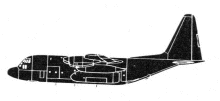Incident Overview

Description
A Lockheed L-100 Hercules of Zambian Air Cargoes, registration 9J-RCY, had completed a cargo flight from Cambridge (UK) to Lusaka via Benina and Entebbe and was being ferried back to its Ndola base in Zambia. During reverser checks prior to takeoff from Lusaka the no. 2 nacelle overheat light came on. The fire shut-off handle was pulled and the warning light went out. As there were no visible signs of a fire, the crew restarted the engine. The flight and landing were uneventful and the no. 1 and 4 engines were shut down when taxiing to the ramp. Entering the parking area, the no. 2 nacelle overheat light illuminated again. The no. 2 engine was shut off and the crew made some turns to park the aircraft next to another Zambian Air Cargoes Hercules (9J-RBX). In the final turn steering and brake pressure became exhausted and the aircraft struck the port wing of 9J-RBX, cutting through some 12 feet of the wing. A fire broke out and destroyed both aircraft. PROBABLE CAUSE: “The collision resulted from failure to halt the aircraft when it was decided to shut down the no. 2 engine. A contributory cause was that the crew lacked a ready understanding of the mechanics of the aircraft.”
Primary Cause
Failure to halt the aircraft when deciding to shut down the no. 2 engine.Failure to halt the aircraft when deciding to shut down the no. 2 engine.Share on:





